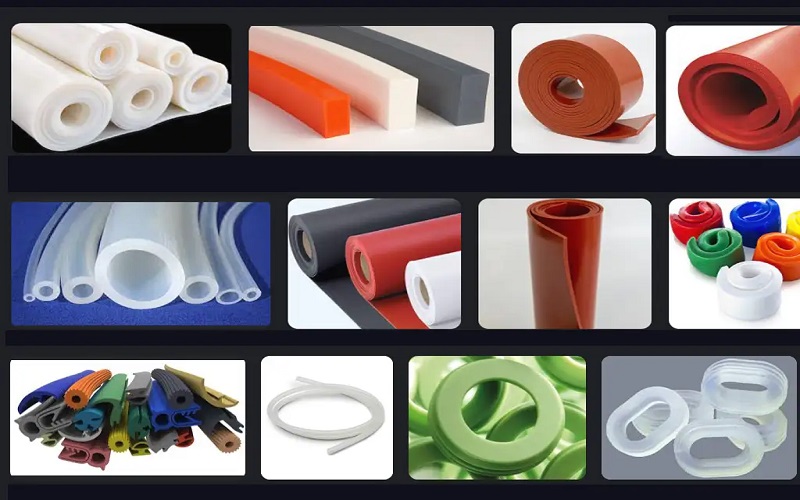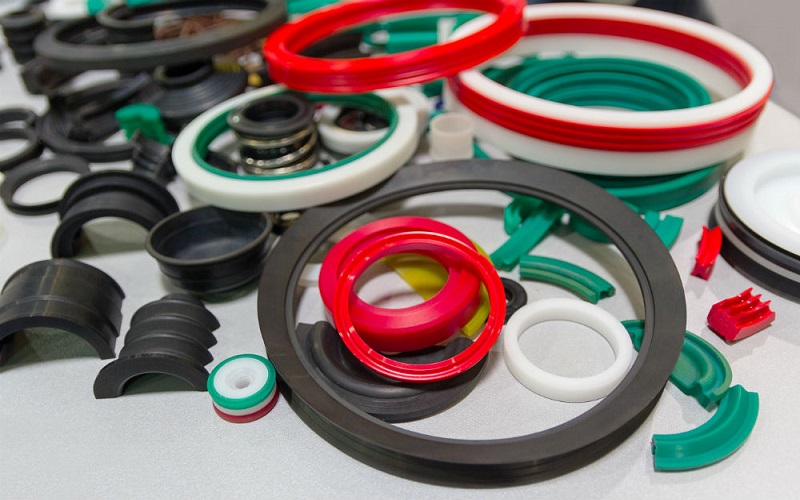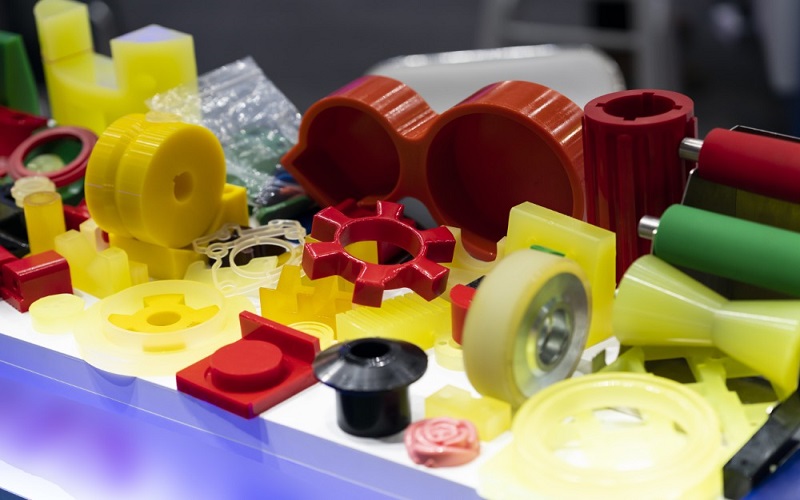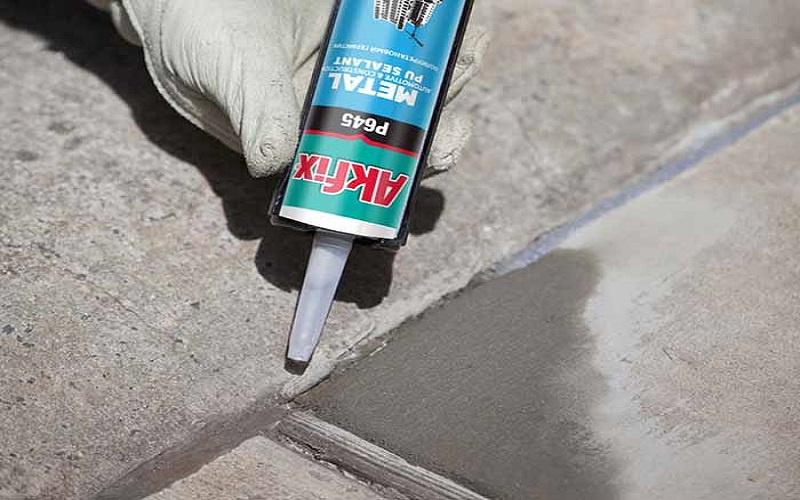Deciding between silicone vs polyurethane sealants? Silicone offers flexibility and excellent temperature resistance, while polyurethane delivers strength and durability.
This article will help you choose by comparing their key properties, uses, and costs in the context of silicone vs polyurethane.
Understanding Silicone and Polyurethane

Silicone and polyurethane are versatile thermosetting polymers. Polyurethane and silicone sealants, featuring a silicon-oxygen backbone, offer notable flexibility and water resistance. Their structure ensures reliability in extreme temperatures, making them popular for various uses, such as sealing gaps and seal joints.
Polyurethane and silicone sealants, created by reacting polyols and isocyanates, result in a durable and elastomeric material. Polyurethanes remain flexible across a wide temperature range and resist UV radiation and weathering, prolonging their outdoor lifespan. However, their general non-paintability can be a drawback for decorative uses.
While less flexible in extreme conditions, polyurethane sealants offer excellent resistance, toughness, excellent abrasion resistance, and strong adhesion, making them resistant ideal for structural applications, including sealing gaps and seal joints.
Both materials are available in various forms to suit different needs. Silicone options include Liquid Silicone Rubber (LSR), High Consistency Rubber (HCR), and Room Temperature Vulcanizing (RTV) types, each with unique properties. Polyurethane, with its wide hardness range and durability, can be tailored for specific performance characteristics, offering solutions for diverse uses.
Applications of Silicone and Polyurethane

Due to their unique properties, silicone and polyurethane materials, such as silicone or polyurethane, are used in various applications, from construction and automotive industry to household repairs and manufacturing.
The following sections explore the specific uses of each material and two materials, highlighting typical applications and why one might be chosen over the other for particular metal tasks. The choice of material depends on various factors.
Common Uses for Silicone
Silicone is highly regarded for its sealing and weatherproofing capabilities in construction. It’s commonly used in kitchens, roofing, and plumbing due to its flexibility and high water resistance. Products like Bostik Roof and Gutter sealant, designed for roofing and guttering, showcase silicone’s ability to adhere to almost any material and prevent fluid leaks, often backed by most manufacturer warranties.
Silicone’s standout features include high-temperature and excellent weather resistance, making it suitable for extreme applications. Products like Bostik Seal N Flex withstand harsh conditions and extreme temperatures without losing flexibility, ideal for wet or exterior surfaces where painting is not required, despite its poor abrasion resistance.
However, silicone’s non-paintability post-application limits its use in some aesthetic applications. Despite this, its durability in harsh conditions and ability to handle high joint movement, as seen in products like Bostik 5CLM, make it versatile for many projects, supported by most manufacturer warranties.
Common Uses for Polyurethane
Polyurethane sealants are celebrated for their exceptional adhesion to various materials, including other substances, making them suitable for structural applications requiring strength and durability. They are ideal for projects involving significant joint movement and vibration, such as in vehicle manufacturing, where caulking products are applied using a caulking gun.
Beyond structural applications, polyurethane’s resistance to abrasion and tearing makes it ideal for high-traffic areas. This toughness is utilized in vehicle manufacturing, particularly in motor body construction and emergency vehicles, where durability is crucial and caulking products ensure robust sealing.
Polyurethane’s paintability allows for aesthetic customization and color matching in various projects. Combined with its strength and durability, this makes polyurethane versatile for a wide range of applications, with caulking guns facilitating precise application of caulking products and adhesion to other substances.
Comparing Physical Properties
Comparing the physical properties of silicone and polyurethane reveals unique advantages and disadvantages for each. Silicone sealants can last over 20 years, whereas organic polyurethane options generally last up to ten years. This longevity makes silicone more cost-effective in the long run, despite its higher upfront cost.
Silicone withstands extreme temperatures, with melting points up to 250°C, while polyurethane has a maximum operational temperature of 80°C, making silicone ideal for high-heat applications where joint movement is minimal. Additionally, silicone’s shore a hardness ranges from 10 A to 90 A, whereas polyurethane can be formulated for a wider hardness range, from Shore 35 A to Shore 70 D.
Polyurethane’s resistance to UV rays is lower than silicone’s, leading to potential fading and brittleness over time when exposed to ten years of sunlight exposure.
However, polyurethane’s faster curing time, usually around 24 hours, can be advantageous for projects requiring quick turnaround. These property differences highlight the importance of selecting the right material for specific applications.
Durability and Longevity

Silicone sealants often last twice as long as polyurethane, excelling in longevity. They are ideal for applications requiring longevity and weather resistance due to their:
- Resilience under extreme temperatures
- Resistance to UV exposure
- Resistance to ozone exposure These qualities ensure silicone remains effective in harsh conditions.
Polyurethane, although not as long-lasting as silicone, excels in abrasion resistance and durability in high-traffic areas. Its resistance to oils and weak acids enhances its use in industrial settings. However, UV light exposure can degrade polyurethane, reducing its effectiveness over time.
Despite silicone’s higher upfront cost, polyurethane can incur higher overall labor expenses due to its shorter lifespan and more frequent replacements. This cost consideration is crucial for long-term projects.
Environmental Impact and Sustainability

The environmental impact of silicone and polyurethane is significant, particularly under sunlight exposure and joint stress or sunlight and extreme temperatures. Although neither material is produced from renewable resources, eco-friendly alternatives exist. Thermoplastic polymer sealants can be recycled, aiding resource recovery and waste reduction. Additionally, biodegradable sealants decompose safely in the environment, offering a more sustainable option.
Polyurethane sealants may contain volatile organic compounds (VOCs), requiring proper ventilation during application for safety. This has led to a shift towards Zero-VOC sealants, addressing environmental concerns and helping manufacturers comply with stricter regulations.
Despite these advancements, the environmental impact of both materials remains significant. Choosing materials with lower VOC content and considering recyclability can reduce the overall environmental footprint of your projects.
Cost Analysis
The cost of silicone and polyurethane materials varies widely based on type and grade:
- Cold-cast polyurethane materials are generally more expensive.
- RTV-1 silicone is cheaper than RTV-2 silicone.
- RTV-2 silicone is significantly pricier. Material grade significantly influences the cost of silicone and polyurethane materials.
When choosing between silicone and polyurethane, consider not just upfront material costs but also long-term maintenance and replacement expenses. Silicone’s longer lifespan can make it more cost-effective in the long run, despite its higher initial cost.
Additionally, understanding the differences in silicone vs polyurethane can help inform your decision.
Choosing the Right Material
Choosing the right material requires careful consideration, aligning with the specific requirements of your application. Both silicone and polyurethane sealants accommodate significant expansion and contraction, allowing for up to 50 percent movement. However, the choice should be guided by factors such as environmental exposure and joint movement, aesthetic needs, and the type of joint movement involved.
For applications requiring extreme temperature resistance and more flexibility, silicone vs other materials is often the better choice. Its excellent flexibility and resilience in harsh weather conditions makes it ideal for exterior surfaces and environments with fluctuating temperatures, where moisture can be a concern on the surface. Additionally, it offers good weather resistance.
Conversely, polyurethane is preferred for structural applications requiring durability and strength, particularly where the material might face significant wear and tear.
Additional considerations, such as the need for paintability or chemicals resistance, should inform the final decision. Each material has its strengths and is suited for different applications, emphasizing the importance of understanding your project’s specific demands.
Popular Brands and Products

Several well-known brands specialize in silicone and polyurethane products, offering a wide range of options for various applications. Rust-Oleum, renowned for its protective coatings, provides polyurethane sealants particularly effective for outdoor applications. Sika, another trusted name, is known for high-quality polyurethane sealants and adhesives used in construction and repair projects.
DAP offers a wide range of sealants and adhesives, including 100% silicone and polyurethane options for both household and industrial needs. Loctite offers a variety of silicone and polyurethane sealants tailored for different uses. Gorilla, famous for strong adhesives, also provides silicone sealant ensuring a waterproof bond, ideal for various applications, along with an adhesive sealant.
These brands are recognized for their reliability and quality, making them go-to choices for both professional and DIY projects. Understanding the strengths and offerings of these brands, including their manufacturer warranties, can help you select the best product for your specific needs.
Summary
In conclusion, both silicone and polyurethane offer unique advantages that make them suitable for different applications. Silicone’s flexibility, extreme temperature resistance, and long lifespan make it ideal for environments with harsh weather conditions and where durability is essential.
On the other hand, polyurethane’s exceptional adhesion, durability, and paintability make it the material of choice for structural applications and projects requiring both strength and aesthetic customization.
Understanding the specific requirements of your project and the environmental conditions it will face is crucial in making the right choice. By considering factors such as longevity, physical properties, environmental impact, and cost, you can make an informed decision that ensures the success and durability of your project.
Empower yourself with the knowledge to choose the best material for your needs, and take your projects to the next level with confidence.
